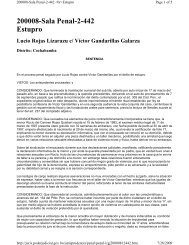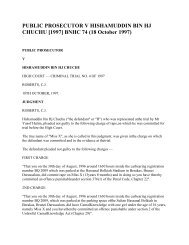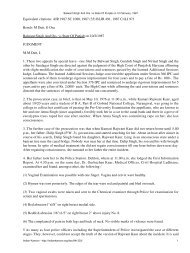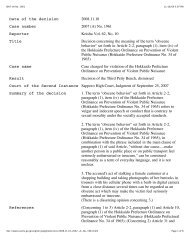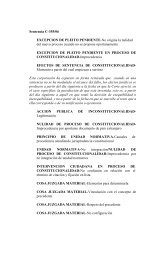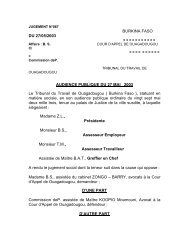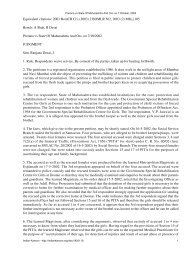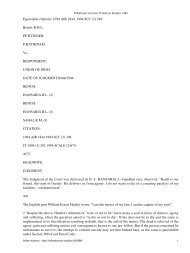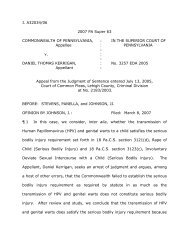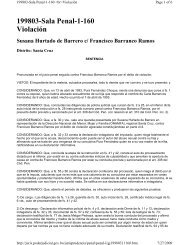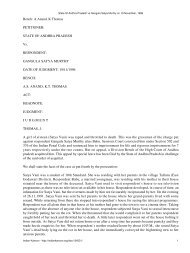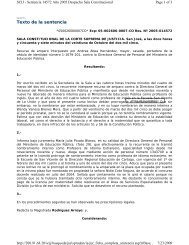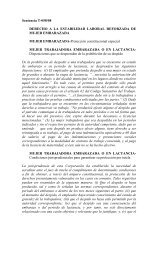CONSTITUTIONAL COURT OF SOUTH AFRICA Case CCT ... - saflii
CONSTITUTIONAL COURT OF SOUTH AFRICA Case CCT ... - saflii
CONSTITUTIONAL COURT OF SOUTH AFRICA Case CCT ... - saflii
Create successful ePaper yourself
Turn your PDF publications into a flip-book with our unique Google optimized e-Paper software.
ACKERMANN AND GOLDSTONE JJenquiry thus at 318E–H:‘As the judgments in the cases referred to earlier demonstrate, conclusions asto the existence of a legal duty in cases for which there is no precedent entailpolicy decisions and value judgments which “shape and, at times, refashionthe common law [and] must reflect the wishes, often unspoken, and theperceptions, often dimly discerned, of the people” (per M M Corbett in alecture reported sub nom “Aspects of the Role of Policy in the Evolution ofthe Common Law” in (1987) SALJ 52 at 67). What is in effect required isthat, not merely the interests of the parties inter se, but also the conflictinginterests of the community, be carefully weighed and that a balance be struckin accordance with what the court conceives to be society’s notions of whatjustice demands.’Hefer JA also stressed the difference between morally reprehensible and legallyactionable omissions and warned that a legal duty is not determined by the mererecognition of social attitudes and public and legal policy (at 320A–B). The questionmust always be whether the defendant ought reasonably and practically to haveprevented harm to the plaintiff: in other words, is it reasonable to expect of thedefendant to have taken positive measures to prevent the harm (Prof J C van der Waltin Joubert (ed) The Law of South Africa vol 8 1 st re-issue part 1 para 56).” 26[43][ As pointed out in the quotation above, in determining whether there was a legalduty on the police officers to act, Hefer JA in Minister of Law and Order v Kadir 27referred to weighing and the striking of a balance between the interests of parties andthe conflicting interests of the community. This is a proportionality exercise withliability depending upon the interplay of various factors. Proportionality is consistentwith the Bill of Rights, but that exercise must now be carried out in accordance with2627Above n 1 at para 7.1995 (1) SA 303 (A) at 318E-H.24



